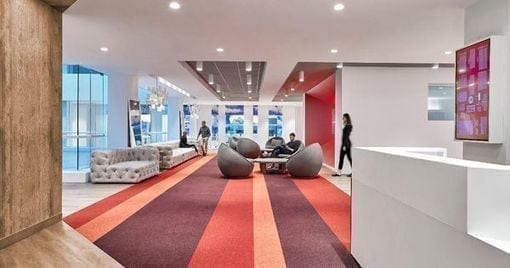For us at Image 4 and for many of our clients, it’s strategic planning season. About this time of year, we’re asked to meet with marketing and planning teams across our client portfolio to help plan next year’s sales support activities.
In many ways it’s our favorite time of year. We have the opportunity to explore and brainstorm with so many smart, engaged professional marketers in B2B, banking and retail sectors. We’re pleased to bring to the table our 33 years’ experience to help “cross-pollinate” the discussion with insights we have gained from working with experts across these sectors.
During these annual discussions, we tend to notice common themes and this year’s theme seems to be Rapid Change.
All of the marketing and sales teams we are talking to, no matter what sector, report feeling pressured by the speed at which technology is changing marketing in the 3D, physical world. After all, today’s technology allows us to edit a website, release a blog, and plan and schedule a social campaign in just a few hours, all the while collecting data that will inform the next online strategy. This means that change, and the ability to adapt to rapidly changing customer behavior, is much simpler and faster in the virtual world.
But in the physical world, it takes time to design and fabricate a marketing platform. You need to look ahead three to 12 months, carefully build budgets, and interact with many other departments within your company…that’s a lot of planning and execution.
The reality of Rapid Change has changed how we design, because it’s also changing how we as humans experience a physical space. Whereas in the past, we may have personally reached out to professionals, experts and friends for answers, now, we tend to look for quick answers on a technology platform, thereby losing that real-world interaction and connection. And if the answer isn’t available in moments, many of us get frustrated and uncomfortable.
At the same time, however, we are seeking rich, meaningful experiences and deep interactions – particularly when we need help with something. We want to seek out the guidance of experts, find perfect places in which to spend our time, and invest in relationships that feel good.
So today, our role is helping our clients bridge this design challenge. We are focused on creating the human-centric, experience-delivering physical spaces that support relationships, onto which we layer a variety of technology to accommodate the human’s behavior change to require rapid delivery of information.
Trade show exhibits, bank and credit union branches, shops and even corporate buildings are all affected by this changing interaction. Our marketing and sales future is evolving to a hybrid data-physical model, one in which you will Yelp for a referral, hit the website for more info, check social to learn more of the personality, values and reputation of the company, and program Waze to get you there. And only then do you open the door to enter the physical location.
That’s when the importance of Experience Design becomes paramount.
Are you expecting to interact with a kiosk or with a human? What will you do if your expectation is not met? What will the organization do to capture your sales value? More and more, we are using Design to answer these questions, and the answers are proving universal across all the various sectors we work in. The answers are found in the evolving human behavior and expectations. If we as marketers successfully build and manage those physical, real-world experiences, we can accommodate Rapid Change and make it work in our favor.
Because, as always, “It’s About the Experience”®.
Category: Events/Exhibits, Financial Services, Retail, Workplace
